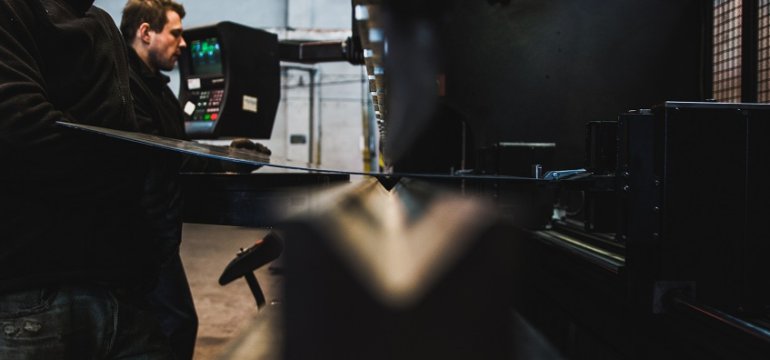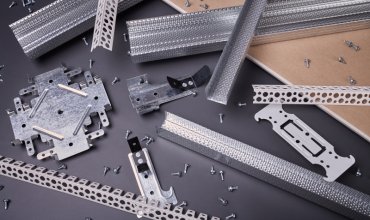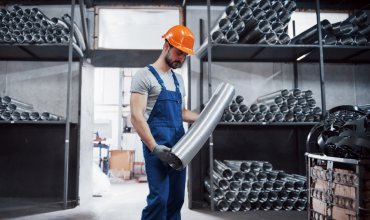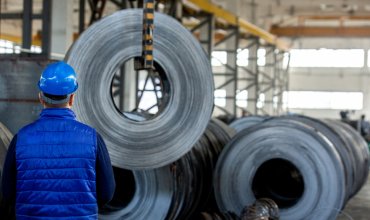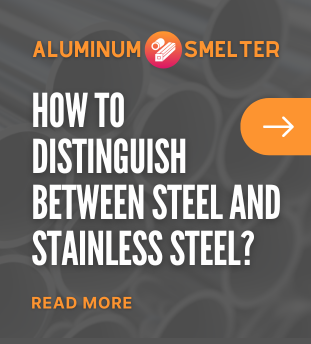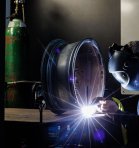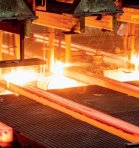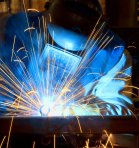Aluminum, due to its lightness, strength and corrosion resistance, is widely used in modern technology and construction. However, in order to take full advantage of its potential, it is necessary to properly form the material. Cold bending of aluminum is one method that allows precise shaping of this metal without the need for high-temperature processing. In Poland, with the growing technology and construction market, knowledge of this method is extremely valuable.
In this guide we will discuss in detail all aspects of aluminum cold bending. We will present the basic principles of this technique, the materials and equipment required for the work, and discuss potential problems and their solutions. We invite you to read on!
What is aluminum cold bending?
Cold bendingof aluminum means shaping this metal at ambient temperature, without heating the material. It is a process that allows the reshaping of aluminum components, such as profiles, tubes or sheets, without the risk of significantly weakening the material's structure.
The process is widely used in many industries. Thanks to it, it is possible to create both simple and complex structural elements with high precision. In Poland, aluminum bending is often used in the automotive, construction and furniture industries.
In practice, cold bending of aluminum involves the use of an appropriate tool, which uses pressure or so-called rolling to form aluminum components into the desired shape. In this process, it is important to maintain the right parameters, such as the force of pressure, the angle of bending and the type of die, to avoid possible defects in the material.
The use of aluminum cold bending in various industries
The application of aluminum cold bending is wide and covers many economic sectors:
Automotive industry - Car structural components, such as frames, brackets or axles, often require precise bending. Aluminum is used here because of its light weight and corrosion resistance.
Construction industry - Aluminum profiles are used in building structures, window systems, doors and facades. Cold bending makes it possible to create precision building components.
Aerospace industry - In aviation, every weight matters. Aluminum, due to its lightness and strength, is an ideal material for aerospace structures, and its cold bending provides the necessary precision.
Furniture industry - Modern furniture often includes aluminum components with unusual shapes. Cold bending makes it possible to create unique designs and structures.
Energy sector - Support structures, masts and components of photovoltaic installations are often made from bent aluminum.
Materials and equipment for cold bending aluminum
In order for aluminum cold b ending to be efficient and precise, the right materials and equipment are required. The most important elements are:
Materials
Aluminum alloys - Depending on the strength and characteristics required, different aluminum alloys are used, such as AW-1050, AW-5052, AW-6061 or AW-6082. Each alloy has different properties, which affect its bendability.
Lubricants - The use of lubricants can greatly facilitate the bending process and reduce the risk of damage to the aluminum surface. The most common are special oils and pastes with anti-corrosion properties.
Equipment
Press brakes - These are machines equipped with special dies that allow precise cold bending of aluminum. Thanks to automation and numerical control, very high accuracy can be achieved.
Roller bending machines - These allow aluminum to bebent by moving the material between rotating rollers. They are ideal for bending longer workpieces such as pipes and profiles.
Segment benders - These are machines for bending slightly more complex shapes. They allow aluminum to be bent in several planes simultaneously.
Measuring instruments - Precision tools for measuring bending angles and material thickness are essential for controlling the process and ensuring high quality.
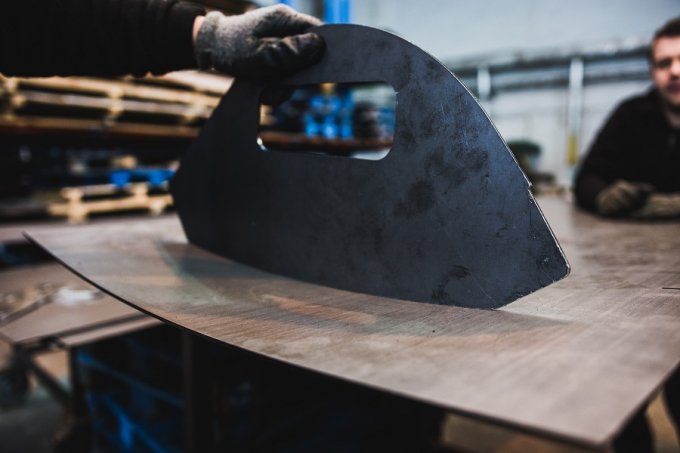
Aluminum cold bending technique: step-by-step steps
The aluminum cold bending process requires precise planning and execution. Here are the steps that are usually taken in the process:
Material testing
The first step is to assess the quality of the aluminum from which the bending will be done. It is necessary to determine whether the material has any damage, folds or cracks that could affect the quality of the final product. Examining the material also includes checking its thickness and alloy type.
Selecting the right equipment
Based on the material evaluation, the appropriate bending equipment is selected. Depending on the shape and size of the part, different types of machines can be used, such as press brakes, roll benders or segment benders.
Preparation of the material
The next step is to prepare the aluminum for bending. To do this, the material is usually lubricated with the appropriate agents to reduce friction and the risk of surface damage. It is also a good idea to make sure that the material is free of contaminants that could affect the quality of bending.
Setting the machine parameters
The next step is to set the parameters of the bending machine. It is important to correctly adjust the bending angle, pressure force and speed to get the desired shape without risking damage to the material.
The bending process
The actual bending is done with the selected equipment. The material is precisely formed according to the set parameters. During bending, the process should be monitored to adjust the machine settings if necessary.
Quality control
The final step is quality control of the resulting product. For this purpose, accurate measurements of the bending angles are taken and the surface of the part is examined for any damage. If the product does not meet expectations, it may be necessary to correct the process and bend again.
Potential problems and solutions when cold bending aluminum
Cracks and creases
Cracks and cre ases are the most common problems when cold bending aluminum. They can be caused by excessive pressure, improper machine setup or the use of low-quality material. To avoid these problems, it is a good idea to plan the process carefully, use the right lubricants and use high-quality materials.
Material distortion
Material distortion can result from uneven pressure during bending. The solution to this problem is to use special dies and segments that evenly distribute the pressure over the entire surface of the bent part.
Reduction in strength
Cold bending can affect the strength of the material, especially if it is done too quickly or with too much pressure. To minimize the risk of weakening the structure, it is a good idea to use gradual bending at lower angles and speeds.
Expert opinions on cold bending of aluminum
Experts point out that cold bending of aluminum is one of the most efficient and precise ways of forming this metal.
Dr. Jan Kowalski, a materials engineering specialist from Warsaw University of Technology, emphasizes: "The cold bending technique of aluminum makes it possible to obtain very precise shapes without the risk of losing the material's mechanical properties. This is crucial in the aerospace and automotive industries, where every gram counts."
On the other hand, Eng. Anna Nowak, a designer at a company that manufactures modern aluminum furniture, says: "Thanks to cold bending, we can create unique and modern designs for our products, while maintaining their high strength and aesthetics."
As we can see, aluminum cold b ending is used in various industries and is widely appreciated for its efficiency and precision.
Advantages and disadvantages of aluminum cold bending
Advantages
- Precision - Cold bending of aluminum allows for highly accurate shapes, which is crucial in many advanced applications.
- Multiplicity - The cold bending process can be performed multiple times while maintaining high quality shapes.
- Speed and efficiency - Thanks to modern equipment, the bending process is fast and efficient, allowing mass production.
Disadvantages
- Equipment cost - Modern bending machines are expensive, which can be a barrier for small businesses.
- Material requirements - Not every aluminum alloy is suitable for cold bending, which can limit material choices.
- Risk of damage - Improper machine settings can lead to material damage, requiring great precision in process planning.
Summary
Aluminum cold bending is an advanced aluminum forming technique that is widely used in various industries. Thanks to its precision, fast process and ability to achieve complex shapes, this method is indispensable in many fields such as automotive, construction, aerospace and furniture.
The key to success with this technique is proper preparation of the material, selection of the right equipment and control of the process parameters. Despite some challenges, aluminum cold bending offers many advantages that translate into quality and production efficiency.
We hope this guide has provided you with complete and detailed information on aluminum cold bending. We encourage you to continue exploring this technique and its applications in practice!


